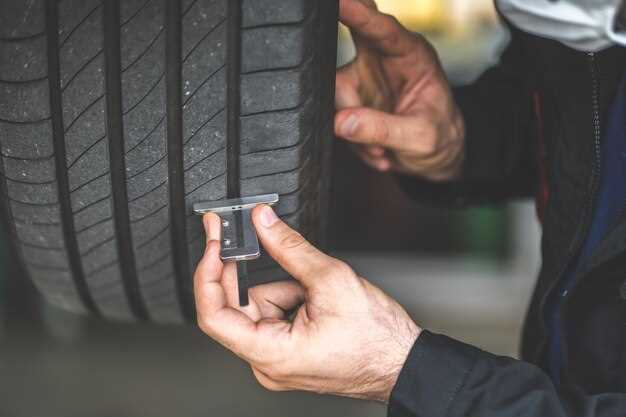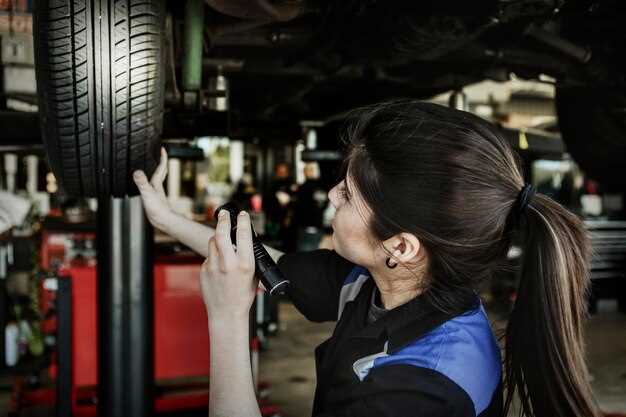
Proper wheel alignment is essential for maintaining optimal vehicle performance and safety. Misalignment can lead to uneven tire wear, compromised steering, and reduced fuel efficiency. Understanding the importance of tracking your wheels can save you time and money in the long run, as well-aligned wheels contribute to a smoother ride and better handling.
In this guide, we will explore the key aspects of checking and correcting your wheel alignment. You will learn how to identify the signs of misalignment, the benefits of regular tracking, and the steps involved in ensuring your wheels are correctly aligned. Whether you are a seasoned car owner or a new driver, having knowledge about wheel alignment will empower you to take proactive measures in keeping your vehicle in top shape.
By following the tips and techniques outlined in this article, you can enhance the longevity of your tires and ensure that your driving experience remains safe and enjoyable. Let’s dive into the details and get started on the path to perfect wheel alignment.
Identifying Signs of Misalignment in Your Vehicle

Recognizing the signs of wheel misalignment is crucial for maintaining optimal vehicle performance and safety. One of the most noticeable indicators is uneven tire wear. If you observe that your tires are more worn on one side than the other, this could signal a misalignment issue.
Another clear sign is when the steering wheel is off-center. If your steering wheel is tilted while driving straight, it suggests that the wheels are not properly aligned. Additionally, you may experience a pulling sensation. If your vehicle tends to drift to one side without any input on the steering wheel, this also indicates that alignment needs to be checked.
Suspension noise can be an indicator of misalignment as well. Clunking or excessive noise when driving over bumps can suggest problems with the alignment and suspension components. Lastly, inconsistent handling or a loose steering feel when maneuvering can further confirm that your wheels may be out of alignment.
Paying attention to these signs not only helps prolong tire life but also enhances driving safety and fuel efficiency. Regular checks can prevent more severe issues from developing and ensure that your vehicle remains in top condition.
Step-by-Step Process for Measuring Wheel Alignment
Measuring wheel alignment is essential for ensuring optimal vehicle performance and tire longevity. Follow these steps to accurately assess your wheel alignment.
Step 1: Prepare Your Vehicle
Park the vehicle on a flat, level surface and ensure it is in neutral or park mode. Turn off the engine and engage the parking brake. Check tire pressure and inflate them to the recommended levels before proceeding.
Step 2: Inspect the Wheels
Examine each wheel for visible damage or irregular wear. Look for signs of uneven tire wear, which can indicate misalignment. Ensure that all wheels are clean and free of debris.
Step 3: Attach Alignment Tools
Using a wheel alignment gauge or alignment machine, position the tools according to the manufacturer’s instructions. Some equipment may require special adapters or plates to attach securely to each wheel.
Step 4: Measure Camber Angle
The camber angle is the tilt of the wheels when viewed from the front. Adjust the gauge to read the camber by taking measurements at the top and bottom of each wheel. Ideally, the readings should be within the manufacturer’s specifications.
Step 5: Measure Toe Angle
Toe refers to the angle at which the wheels point in relation to the vehicle’s centerline. Ensure the alignment tool is level and measure the distance between the front and rear edges of the tires on both sides. A properly aligned vehicle should have equal distances.
Step 6: Measure Caster Angle
Caster angle affects steering stability and handling. Adjust the alignment tool to measure the angle formed between the steering axis and the vertical line. Consult the vehicle’s specifications for precise values.
Step 7: Adjust as Necessary
If any measurements fall outside the recommended ranges, make the necessary adjustments. This may involve adjusting the tie rods, control arms, or suspension components to align the wheels properly.
Step 8: Recheck Measurements
After making adjustments, repeat the measurements to ensure accuracy. It is crucial to verify that all angles are within the specified ranges for optimal performance.
Step 9: Test Drive
Finally, take the vehicle for a test drive to evaluate its handling and steering. Pay attention to how the car feels on the road; any noticeable pulling or vibration may indicate the need for further adjustments.
By following this step-by-step process, you can successfully measure and ensure the proper alignment of your vehicle’s wheels, promoting enhanced safety and performance.
Common Tools and Techniques for Correcting Wheel Alignment

Correcting wheel alignment requires a combination of specific tools and techniques to ensure that your vehicle tracks properly. One of the most commonly used tools is a wheel alignment machine, which utilizes lasers or cameras to measure the angles of the wheels in relation to the vehicle’s specifications. These machines provide precise data, allowing technicians to make necessary adjustments.
Another essential tool is a camber gauge, which helps measure the camber angle of the wheels. This angle is crucial in determining how well your tires make contact with the road, influencing both wear and handling. In addition, toe-in and toe-out measurements can be taken using a toe adjustment tool. This tool helps check the alignment of the wheels relative to each other, ensuring proper tracking and stability.
For manual adjustments, a wrench and specialized alignment shims may be required to correct the camber and toe angles. These shims can be inserted or removed to fine-tune the alignment settings. Depending on the vehicle type, adjusting tie rods or control arms may also be necessary to achieve optimal alignment.
Regularly checking tire pressure is another technique that indirectly influences wheel alignment, as uneven pressure can cause premature tire wear and misalignment. It’s important to identify and rectify any signs of wear, such as uneven tire treads, as they can indicate alignment issues that need attention.
In summary, achieving the correct wheel alignment involves a combination of advanced machines for measurement, manual tools for adjustments, and regular maintenance practices. Proper tracking ensures a smoother ride, better fuel efficiency, and prolonged tire life.
